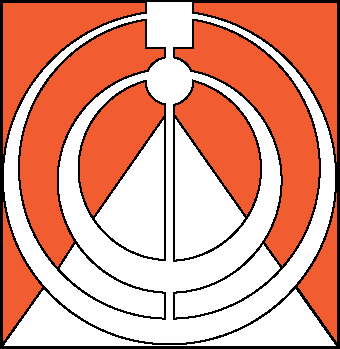Mi-STAR Unit Progression Model (UPM)
The Mi-STAR Unit Progression Model (UPM) lays out a path to student mastery of the middle school NGSS grade-band, through 20 bundles that are in development to become Mi-STAR units. The dimensions of NGSS are sequenced across each year and between years to create a coherent progression that builds on students’ prior knowledge and skills. Each bundle in the sequence is connected to a 21st-century theme that will serve as the basis for a Unit Challenge—a problem or issue that the students attempt to solve or address throughout the course of a unit.
.jpg)
The progression model is available for use by all educators who are transitioning to NGSS or related standards. Click here to download a .pdf of the Mi-STAR Unit Progression Model. Please attribute Mi-STAR when using in any manner. Suggested citation:
Bergman, B.G., S.C. Tubman, E. Gochis, J.E.Huntoon. 2016. A progression and bundling model for developing integrated, socially-relevant science and engineering curricula aligned with the Next Generation Science Standards, Grades 6-8. Journal of the Michigan Science Teachers Association. Volume 61.2.
In the Classroom
Mi-STAR's UPM is a work in progress based on the feedback we get from the classroom, as we design and implement units. The initial UPM was developed by scientists, engineers and educators based on a set of criteria defined below in a "A Deeper Look". The UPM is modified on a nearly yearly basis as curriculum development teams hone in on units. The UPM is also modified based on the unmatched insights of classroom teachers and their students. For example, a unit might be made smaller or, on rare occasion, a unit might move up or down a grade based on the feedback of teachers and their students.
The content and sequencing of bundles can also be adapted by teachers and districts who are writing their own units. The Mi-STAR team and Mi-STAR teachers are building units on this particular model because they anticipate that this sequence will resonate with Michigan students. That said, each district will know best what will work for their specific context, for their school and their students. The UPM only reflects one way of bundling real-world themes and the performance expectations and can be modified to better meet districts' specific needs.
The content and sequencing of bundles can also be adapted by teachers and districts who are writing their own units. The Mi-STAR team and Mi-STAR teachers are building units on this particular model because they anticipate that this sequence will resonate with Michigan students. That said, each district will know best what will work for their specific context, for their school and their students. The UPM only reflects one way of bundling real-world themes and the performance expectations and can be modified to better meet districts' specific needs.
A Deeper Look
Switching from a conventional curriculum to one that’s designed to meet the Next Generation Science Standards (NGSS) is not simply a matter of making a few tweaks in old lesson plans. In the middle grades alone, students must master 59 performance expectations drawn from NGSS’s three dimensions: disciplinary core ideas, science and engineering practices, and crosscutting concepts.Mi-STAR’s UPM for grades 6–8 scaffolds the 59 performance expectations across 20 bundles. As students progress through the curriculum, they repeatedly use the disciplinary core ideas, science and engineering practices, and crosscutting concepts of the middle school grade-band. The units build on one another in a coherent fashion, assuming prior knowledge from previous units. (Additionally, Mi-STAR offers Off-the-Shelf lessons to support teachers if they need to fill in gaps in students’ prior knowledge.)
The UPM also lays the foundation for student motivation in the curriculum. Each unit in the UPM is anchored by a 21st-century theme and Unit Challenge related to that theme. Unit Challenges and 21st century themes vary evenly across each year and between grades, exposing students to a variety of real-world issues, science and engineering careers, and ways of solving problems.
Criteria for Bundling and Sequencing of PE's
The bundling and sequencing of the NGSS performance expectations throughout the three-year curriculum rests on several design criteria:
- Conceptual connection of PE's within a bundle to a societal issue, which gets students excited about learning
- Integration within a bundle and across the years, incorporating a variety of STEM disciplines throughout the curriculum
- Coherence within a bundle and across the years, allowing students to build upon previous knowledge and skills. Each unit in the UPM focuses on specific disciplinary core ideas. Crosscutting concepts and science and engineering practices are addressed iteratively within units and over the course of each school year. Each semester has a Unifying Crosscutting Concept that ties into lesson-level phenomena or the central phenomena behind the Unit Challenge.
- Themes, a set of seven interdisciplinary topics that are relevant in today’s society. Mi-STAR curriculum developers selected these broad themes after researching big issues identified by science and engineering societies: Built Environment, Humans and Public Health, Food and Agriculture, Sustainable Ecosystems, Water Resources, Earth and Space Systems, and Earth and Energy Resources. Students are motivated to learn because they see the relevance of their learning in the real world.
- Unifying crosscutting concepts across the years, which are identified by NGSS, including Systems and System Models, Patterns/Cause and Effect, Energy and Matter, Structure and Function, Stability and Change, and Scale, Proportion, and Quantity, and tie into each unit in a semester through the phenomena investigated in the Unit Challenge
.jpg) |  |  |  |
Sources
- For a deeper discussion of the UPM, see “A Progression and Bundling Model for Developing Integrated, Socially Relevant Science and Engineering Curricula Aligned with the Next Generation Science Standards, Grades 6-8,” by Brenda Bergman et al., published in the fall 2016 edition of MSTA Journal.



















